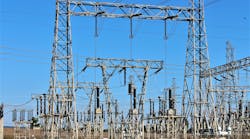Have we over-focused on high-tech adornments to the geriatric infrastructure?
The long-term Con Edison outages due to Sandy raised a lot of questions about the company’s disaster preparedness. That’s a switch in perspective because, after the World Trade Center attacks, we were dumbstruck at how quickly service was restored. Con Ed has also been the industry exemplar of reliability since I can remember.
The streets of Manhattan are where the U.S. utility business all started. Con Ed has 94,000 miles of underground cable and 35,000 underground transformers. And, in Manhattan the 21,000 miles of cable are networked, making the system a marvel of distribution planning and construction.
But what terrorists couldn’t do, nature did. The 14-foot tide washed down through the manholes and over the transformers and switches. At least one transformer exploded. The network went down.
All the smarts and sophistication that provided rapid fault sensing and network reconfiguration were overwhelmed and knocked out of operation by the flood of conductive sea water.
Ironically the issue of potential flooding had been raised a couple of months before Sandy struck. Con Ed had said it was making improvements to flood protection and had spent about $24 million for that purpose since 2007. Radical adaptations, such as submersible switches and above ground transformers would cost at least $250 million.
But wait, that’s about the same amount as Con Ed invested in smart grid technology ($272 million) with half provided by the federal funds-matching stimulus.
It makes me wonder (without having an easy answer) if the funds would have been better used in making the infrastructure more physically robust rather than “smarter”. Do we really have the right strategy for upgrading our aging power delivery system? Have we gotten too enamored with high tech at the expense of taking care of the physical support?
A better brain doesn’t matter if the heart doesn’t pump.
These are questions that are getting louder in the industry. Sea level rise, coastal flooding and more extreme weather are all associated by many with climate change. Climate change is also high on the President’s agenda now that the elections are over.
If our industry is as smart as we say our grid is, we’ll get real busy helping to shape policy so that further funding goes where it will do our customers the most good.
About the Editor
Paul Mauldin earned his B.S. and an M.S. in electrical engineering from the University of California-Berkeley and is a registered professional engineer who has worked in the energy industry for more than 25 years. Mauldin is also editor of Smart Energy Portal smartenergyportal.net

